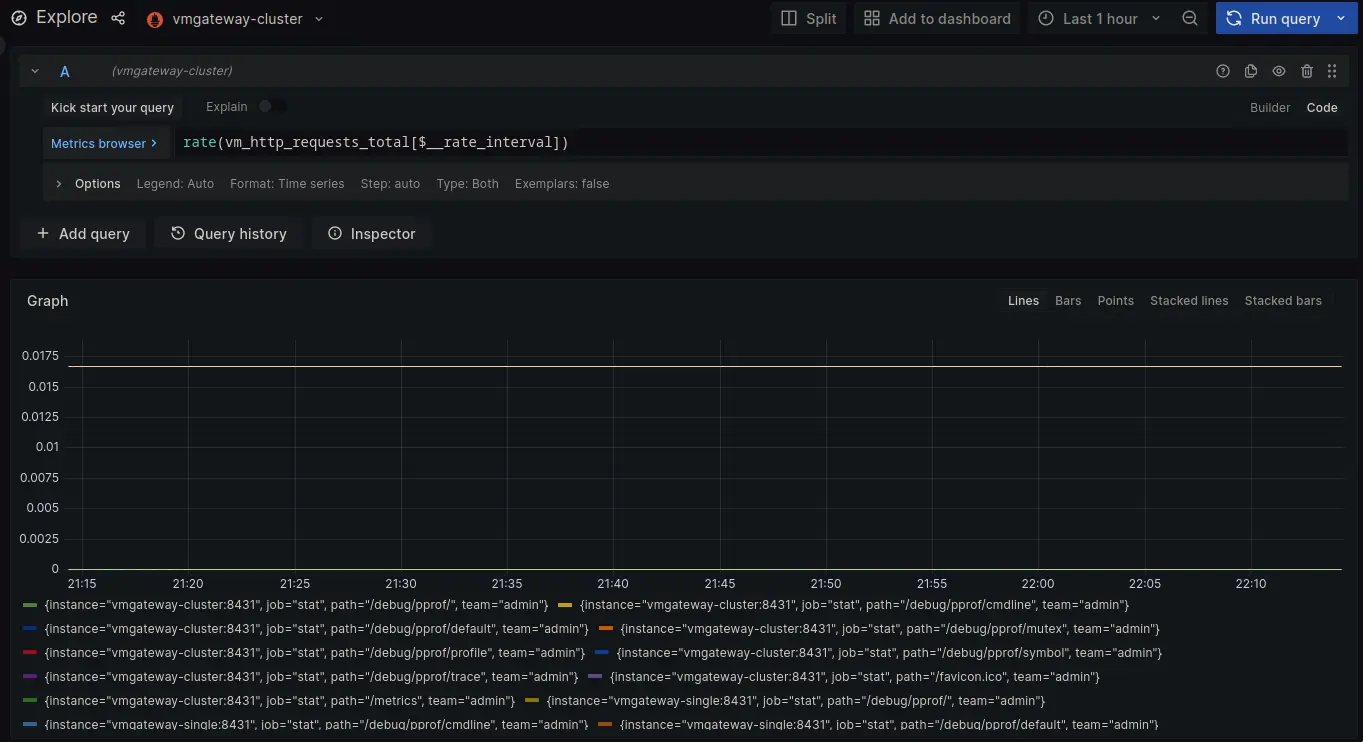The plugin was renamed in https://github.com/VictoriaMetrics/victoriametrics-datasource/pull/178
Signed-off-by: hagen1778 <roman@victoriametrics.com>
(cherry picked from commit ee66fb4387)
Signed-off-by: hagen1778 <roman@victoriametrics.com>
13 KiB
| weight | title | menu | aliases | |||||||
|---|---|---|---|---|---|---|---|---|---|---|
| 5 | How to configure vmgateway for multi-tenant access using Grafana and OpenID Connect |
|
|
How to configure vmgateway for multi-tenant access using Grafana and OpenID Connect
Using Grafana with vmgateway is a great way to provide multi-tenant access to your metrics. vmgateway provides a way to authenticate users using JWT tokens issued by an external identity provider. Those tokens can include information about the user and the tenant they belong to, which can be used to restrict access to metrics to only those that belong to the tenant.
Prerequisites
- Identity service that can issue JWT tokens
- Grafana
- VictoriaMetrics single-node or cluster version
- vmgateway
Configure identity service
The identity service must be able to issue JWT tokens with the following vm_access claim:
{
"vm_access": {
"tenant_id": {
"account_id": 0,
"project_id": 0
}
}
}
See details about all supported options in the vmgateway documentation.
Configuration example for Keycloak
Keycloak is an open source identity service that can be used to issue JWT tokens.
-
Log in with admin credentials to your Keycloak instance
-
Go to
Clients->Create.
UseOpenID ConnectasClient Type.
SpecifygrafanaasClient ID.
ClickNext.

-
Enable
Client authentication.
EnableAuthorization.
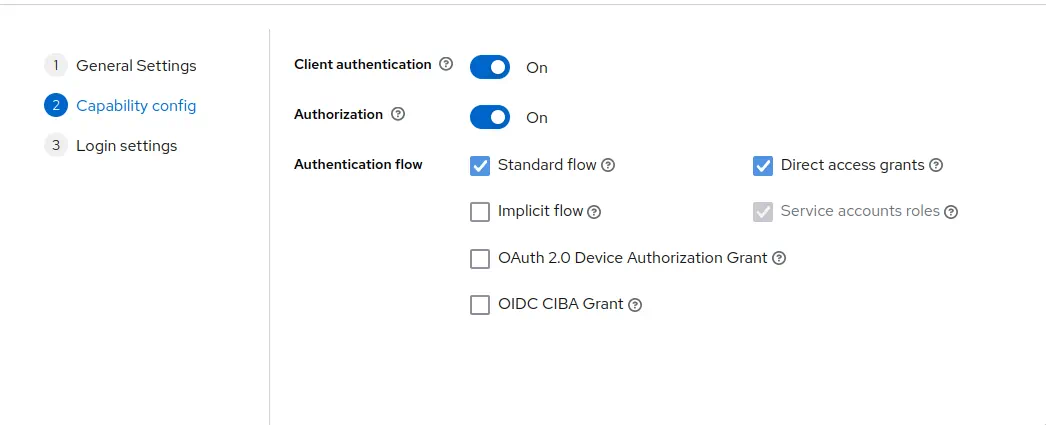
ClickNext. -
Add Grafana URL as
Root URL. For example,http://localhost:3000/.
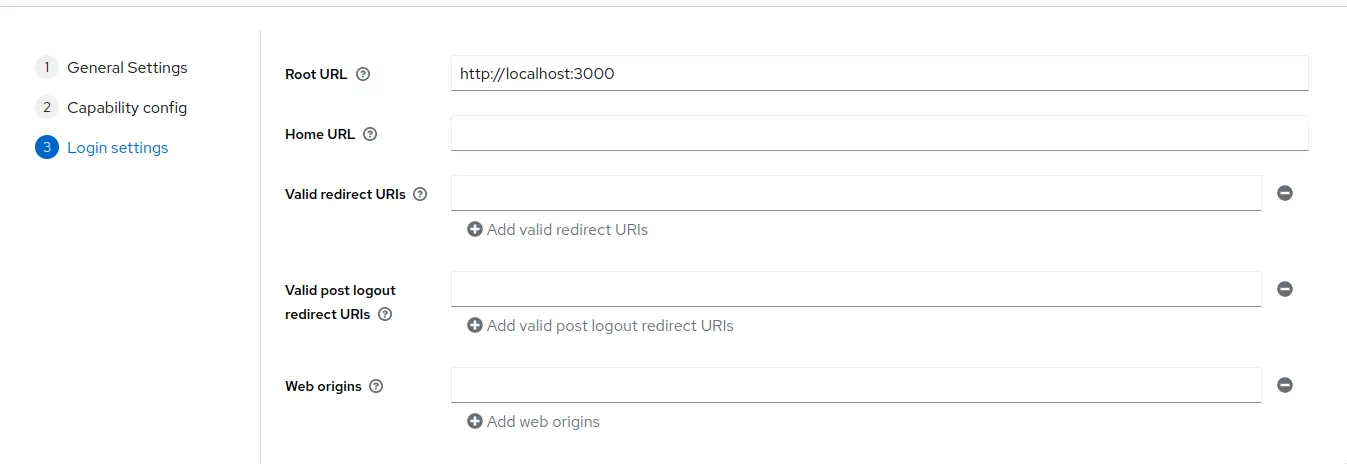
ClickSave. -
Go to
Clients->grafana->Credentials.
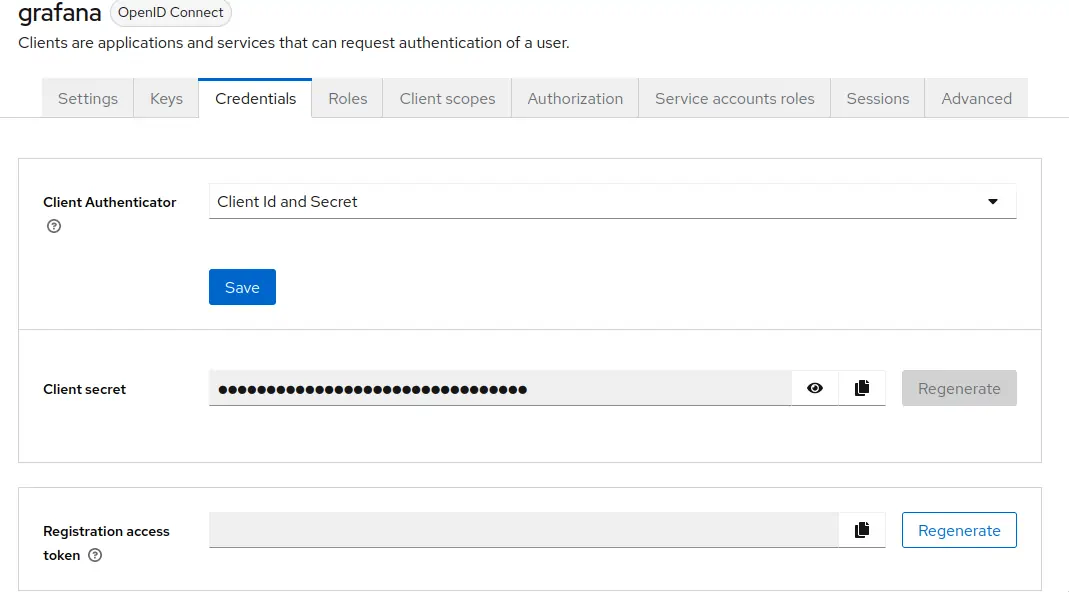
Copy the value ofClient secret. It will be used later in Grafana configuration. -
Go to
Clients->grafana->Client scopes.
Click atgrafana-dedicated->Add mapper->By configuration->User attribute.
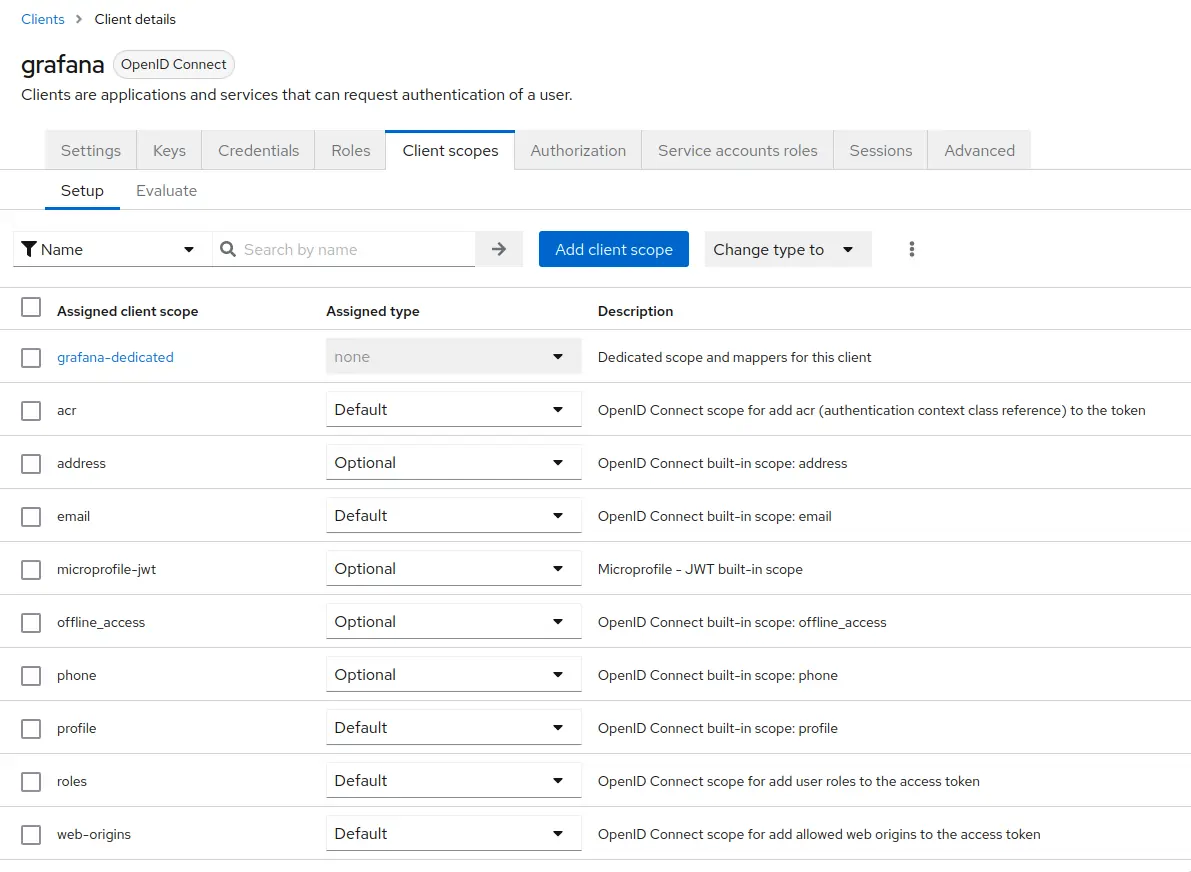

Configure the mapper as followsNameasvm_access.Token Claim Nameasvm_access.User Attributeasvm_access.Claim JSON TypeasJSON. EnableAdd to ID tokenandAdd to access token.
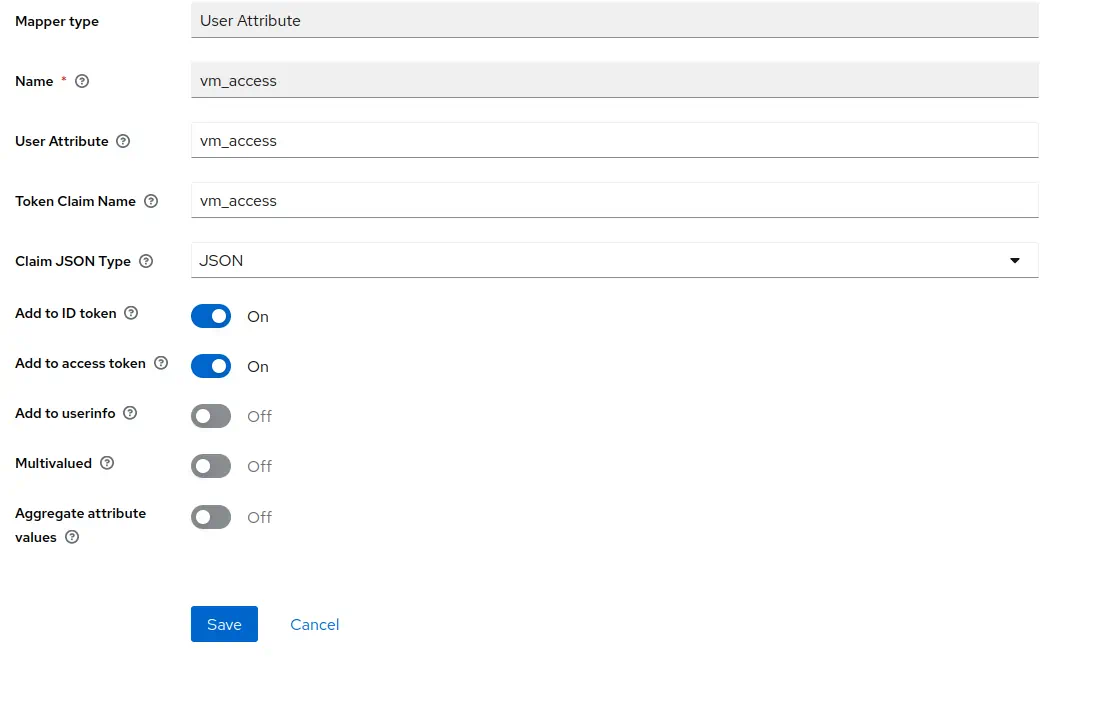
ClickSave. -
Go to
Users-> select user to configure claims ->Attributes.
Specifyvm_accessasKey.
For the purpose of this example, we will use 2 users:- for the first user we will specify
{"tenant_id" : {"account_id": 0, "project_id": 0 },"extra_labels":{ "team": "admin" }}asValue. - for the second user we will specify
{"tenant_id" : {"account_id": 0, "project_id": 1 },"extra_labels":{ "team": "dev" }}asValue.
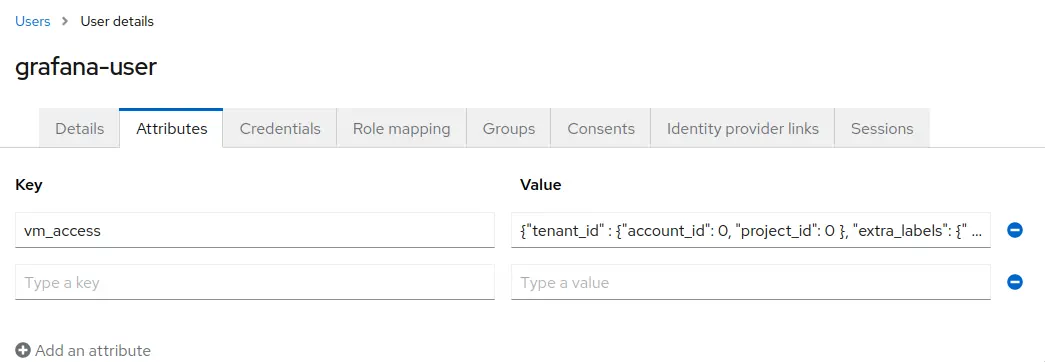
ClickSave.
- for the first user we will specify
Configure grafana
To forward JWT tokens Grafana must be configured to use OpenID Connect authentication as follows:
[auth.generic_oauth]
enabled = true
allow_sign_up = true
name = keycloak
client_id = {CLIENT_ID_FROM_IDENTITY_PROVIDER}
client_secret = {SECRET_FROM_IDENTITY_PROVIDER}
scopes = openid profile email
auth_url = http://localhost:3001/realms/{KEYCLOAK_REALM}/protocol/openid-connect/auth
token_url = http://localhost:3001/realms/{KEYCLOAK_REALM}/protocol/openid-connect/token
api_url = http://localhost:3001/realms/{KEYCLOAK_REALM}/protocol/openid-connect/userinfo
After restarting Grafana with the new config you should be able to log in using your identity provider.
Start vmgateway
Multi-tenant access for VictoriaMetrics cluster
Now starting vmgateway with enabled authentication is as simple as adding the -enable.auth=true flag.
In order to enable multi-tenant access, you must also specify the -clusterMode=true flag.
./bin/vmgateway -eula \
-enable.auth=true \
-clusterMode=true \
-write.url=http://localhost:8480 \
-read.url=http://localhost:8481
With this configuration vmgateway will use the vm_access claim from the JWT token to restrict access to metrics.
For example, if the JWT token contains the following vm_access claim:
{
"vm_access": {
"tenant_id": {
"account_id": 0,
"project_id": 0
}
}
}
Note: in case
project_idis not specified, default value0is used.
Then vmgateway will proxy request to an endpoint with the following path:
http://localhost:8480/select/0:0/
This allows to restrict access to specific tenants without having to create separate datasources in Grafana, or manually managing access at another proxy level.
Multi-tenant access for single-node VictoriaMetrics
In order to use multi-tenant access with single-node VictoriaMetrics, you can use token claims such as extra_labels
or extra_filters filled dynamically by using Identity Provider's user information.
vmgateway uses those claims and enhanced Prometheus querying API
to provide additional filtering capabilities.
For example, the following claims can be used to restrict user access to specific metrics:
{
"vm_access": {
"extra_labels": {
"team": "dev"
},
"extra_filters": ["{env=~\"aws|gcp\",cluster!=\"production\"}"]
}
}
This will add the following query args to the proxied request:
extra_labels=team=devextra_filters={env=~"aws|gcp",cluster!="production"}
With this configuration VictoriaMetrics will add the following filters to every query: {team="dev", env=~"aws|gcp", cluster!="production"}.
So when user will try to query vm_http_requests_total query will be transformed to vm_http_requests_total{team="dev", env=~"aws|gcp", cluster!="production"}.
Token signature verification
It is also possible to enable JWT token signature verification at
vmgateway.
To do this by using OpenID Connect discovery endpoint you need to specify the -auth.oidcDiscoveryEndpoints flag. For example:
./bin/vmgateway -eula \
-enable.auth=true \
-clusterMode=true \
-write.url=http://localhost:8480 \
-read.url=http://localhost:8481
-auth.oidcDiscoveryEndpoints=http://localhost:3001/realms/master/.well-known/openid-configuration
Now vmgateway will print the following message on startup:
2023-03-13T14:45:31.552Z info VictoriaMetrics/app/vmgateway/main.go:154 using 2 keys for JWT token signature verification
That means that vmgateway has successfully fetched the public keys from the OpenID Connect discovery endpoint.
It is also possible to provide the public keys directly via the -auth.publicKeys flag. See the vmgateway documentation for details.
Use Grafana to query metrics
Create a new Prometheus datasource in Grafana with the following URL http://<vmgateway>:8431.
URL should point to the vmgateway instance.
In the "Type and version" section it is recommended to set the type to "Prometheus" and the version to at least "2.24.x":

This allows Grafana to use a more efficient API to get label values.
You can also use VictoriaMetrics Grafana datasource plugin. See installation instructions here.
Enable Forward OAuth identity flag.

Now you can use Grafana to query metrics from the specified tenant.
Users with vm_access claim will be able to query metrics from the specified tenant.
Test multi-tenant access
For the test purpose we will setup the following services as docker-compose manifest:
- Grafana
- Keycloak
- vmagent to generate test metrics
- VictoriaMetrics cluster
- vmgateway configured to work in cluster mode
- VictoriaMetrics single node
- vmgateway configured to work in single node mode
version: '3'
services:
keycloak:
image: quay.io/keycloak/keycloak:21.0
command:
- start-dev
ports:
- 3001:8080
environment:
KEYCLOAK_ADMIN: admin
KEYCLOAK_ADMIN_PASSWORD: change_me
grafana:
image: grafana/grafana-oss:9.4.3
network_mode: host
volumes:
- ./grafana.ini:/etc/grafana/grafana.ini
- grafana_data:/var/lib/grafana/
vmsingle:
image: victoriametrics/victoria-metrics:v1.91.0
command:
- -httpListenAddr=0.0.0.0:8429
vmstorage:
image: victoriametrics/vmstorage:v1.91.0-cluster
vminsert:
image: victoriametrics/vminsert:v1.91.0-cluster
command:
- -storageNode=vmstorage:8400
- -httpListenAddr=0.0.0.0:8480
vmselect:
image: victoriametrics/vmselect:v1.91.0-cluster
command:
- -storageNode=vmstorage:8401
- -httpListenAddr=0.0.0.0:8481
vmagent:
image: victoriametrics/vmagent:v1.91.0
volumes:
- ./scrape.yaml:/etc/vmagent/config.yaml
command:
- -promscrape.config=/etc/vmagent/config.yaml
- -remoteWrite.url=http://vminsert:8480/insert/0/prometheus/api/v1/write
- -remoteWrite.url=http://vmsingle:8429/api/v1/write
vmgateway-cluster:
image: victoriametrics/vmgateway:v1.91.0-enterprise
ports:
- 8431:8431
command:
- -eula
- -enable.auth=true
- -clusterMode=true
- -write.url=http://vminsert:8480
- -read.url=http://vmselect:8481
- -httpListenAddr=0.0.0.0:8431
- -auth.oidcDiscoveryEndpoints=http://keycloak:8080/realms/master/.well-known/openid-configuration
vmgateway-single:
image: victoriametrics/vmgateway:v1.91.0-enterprise
ports:
- 8432:8431
command:
- -eula
- -enable.auth=true
- -write.url=http://vmsingle:8429
- -read.url=http://vmsingle:8429
- -httpListenAddr=0.0.0.0:8431
- -auth.oidcDiscoveryEndpoints=http://keycloak:8080/realms/master/.well-known/openid-configuration
volumes:
grafana_data:
For the test purpose vmagent will be configured to scrape metrics from the following targets(scrape.yaml contents):
scrape_configs:
- job_name: stat
metric_relabel_configs:
- if: "{instance =~ 'vmgateway.*'}"
action: replace
target_label: team
replacement: admin
- if: "{instance =~ 'localhost.*'}"
action: replace
target_label: team
replacement: dev
static_configs:
- targets:
- localhost:8429
- vmgateway-single:8431
- vmgateway-cluster:8431
Relabeling rules will add the team label to the scraped metrics in order to test multi-tenant access.
Metrics from localhost will be labeled with team=dev and metrics from vmgateway will be labeled with team=admin.
vmagent will write data into VictoriaMetrics single-node and cluster(with tenant 0:0).
Grafana datasources configuration will be the following:

Let's login as user with team=dev labels limitation set via claims.
Using vmgateway-cluster results into No data response as proxied request will go to tenant 0:1.
Since vmagent is only configured to write to 0:0 No data is an expected response.

Switching to vmgateway-single does have data. Note that it is limited to metrics with team=dev label.

Now lets login as user with team=admin.
Both cluster and single node datasources now return metrics for team=admin.
